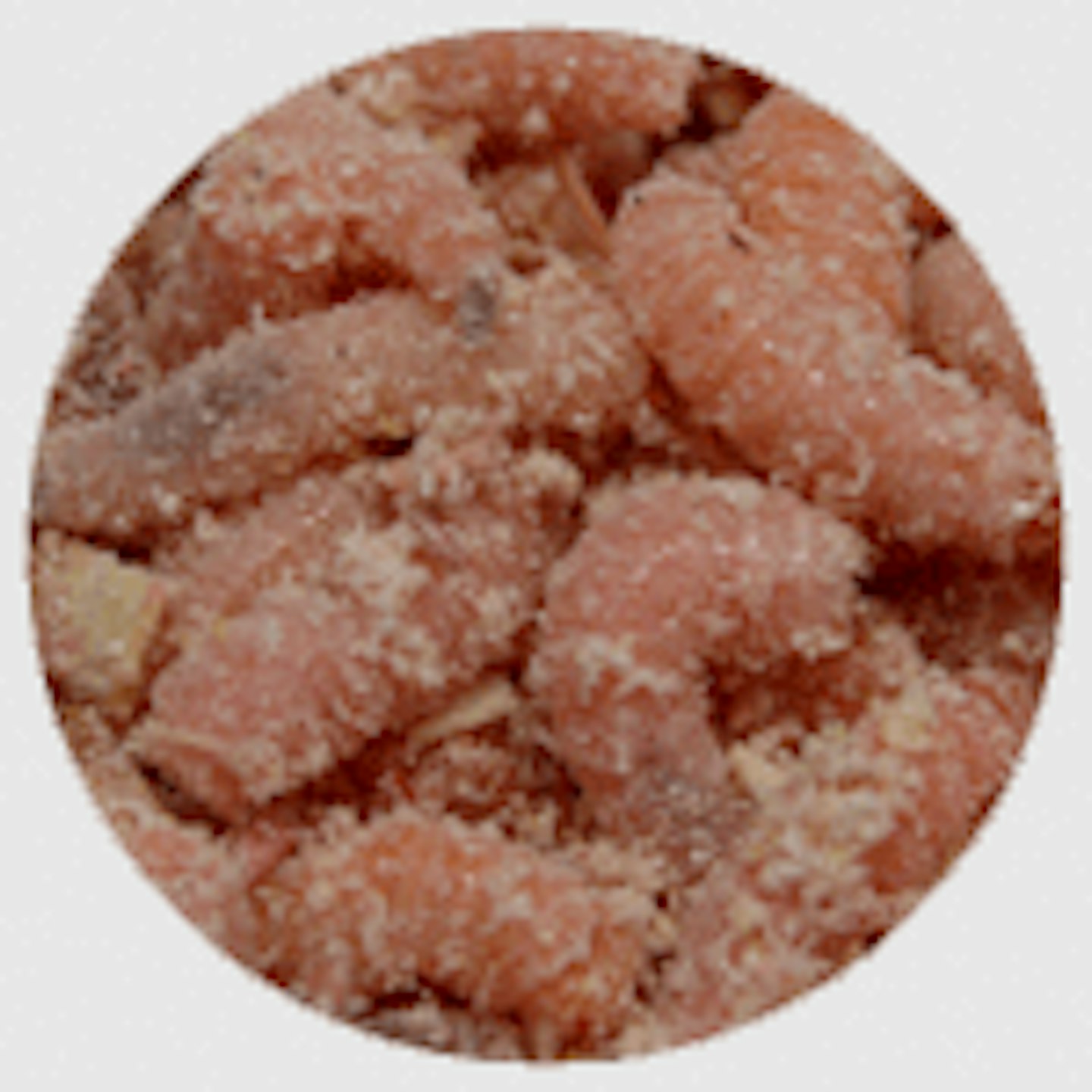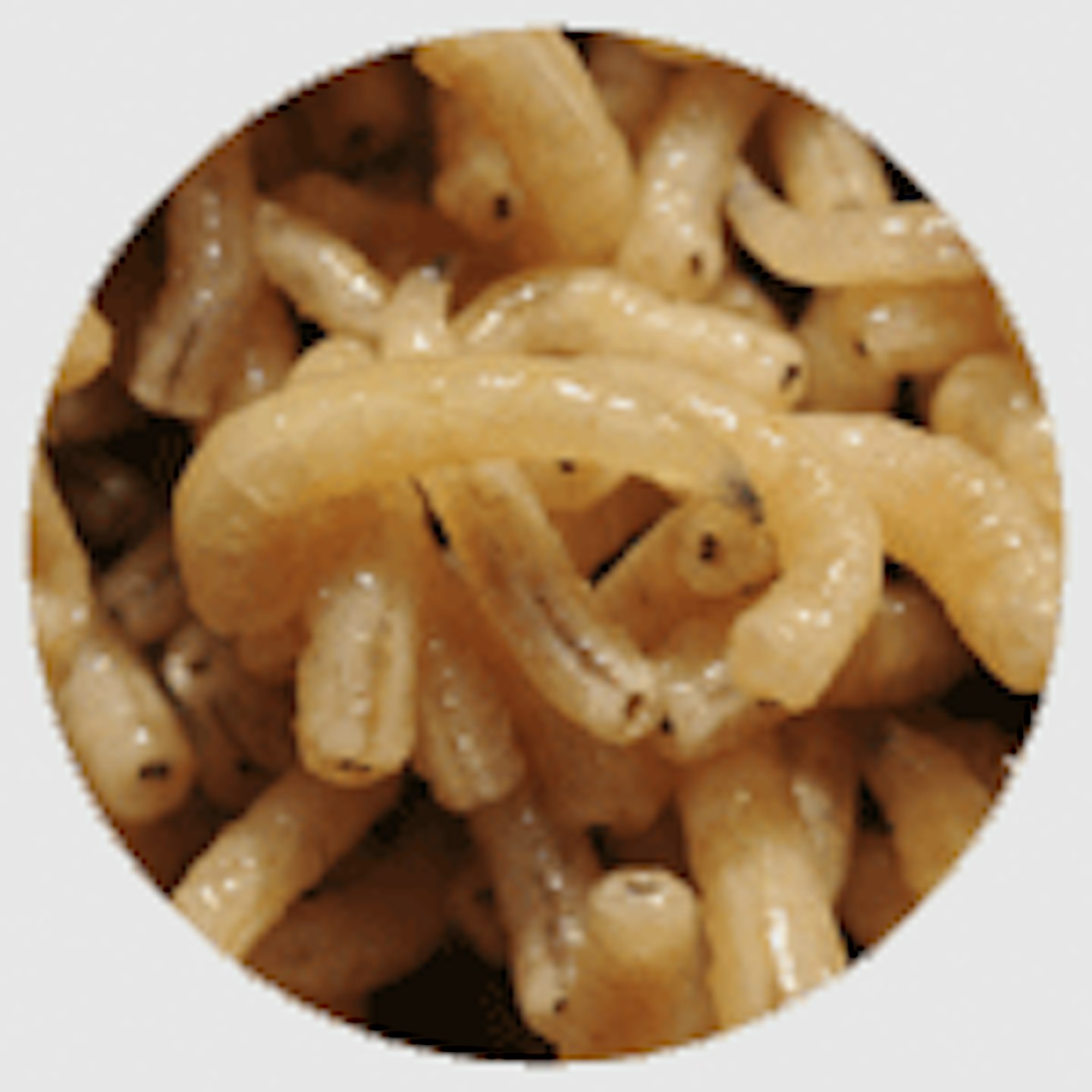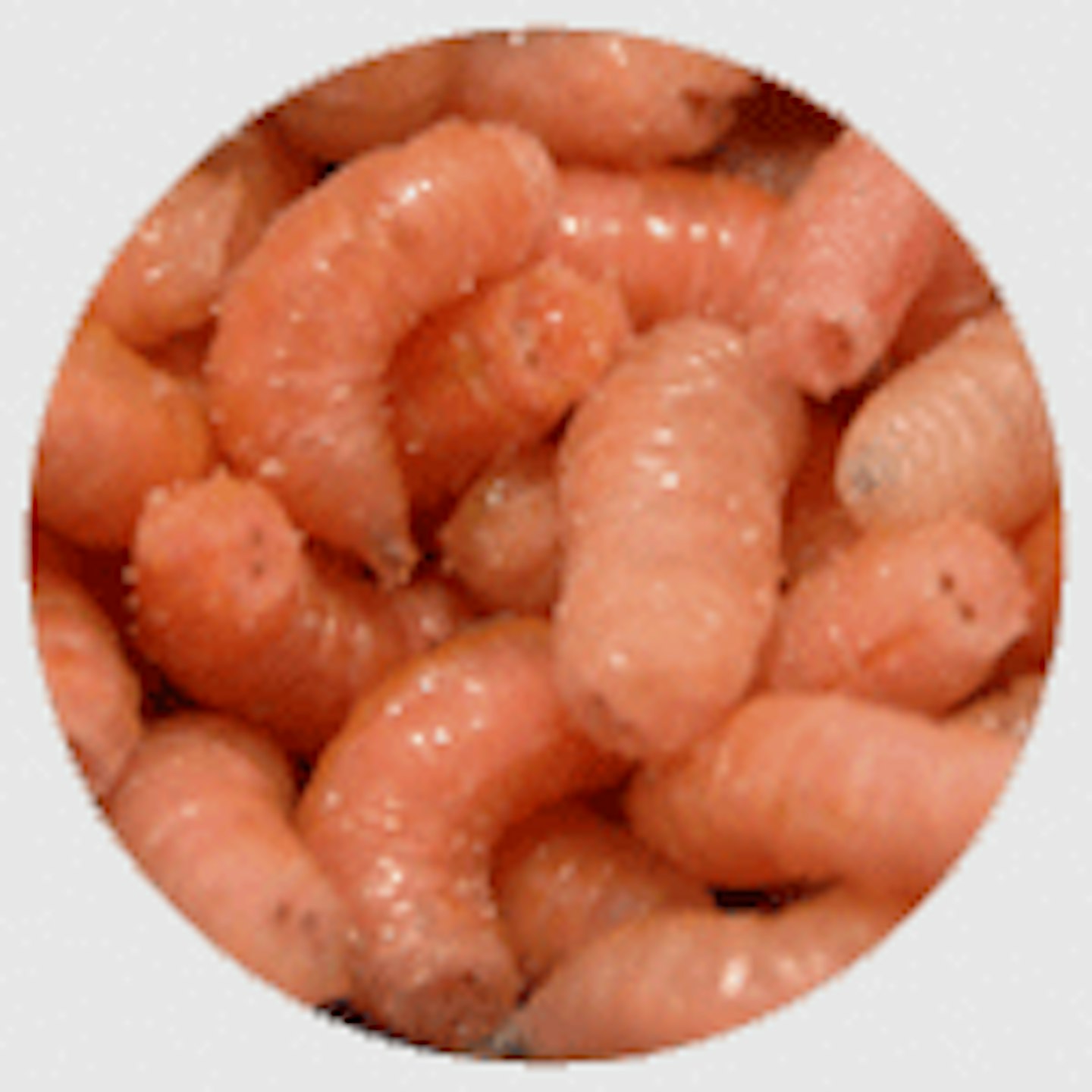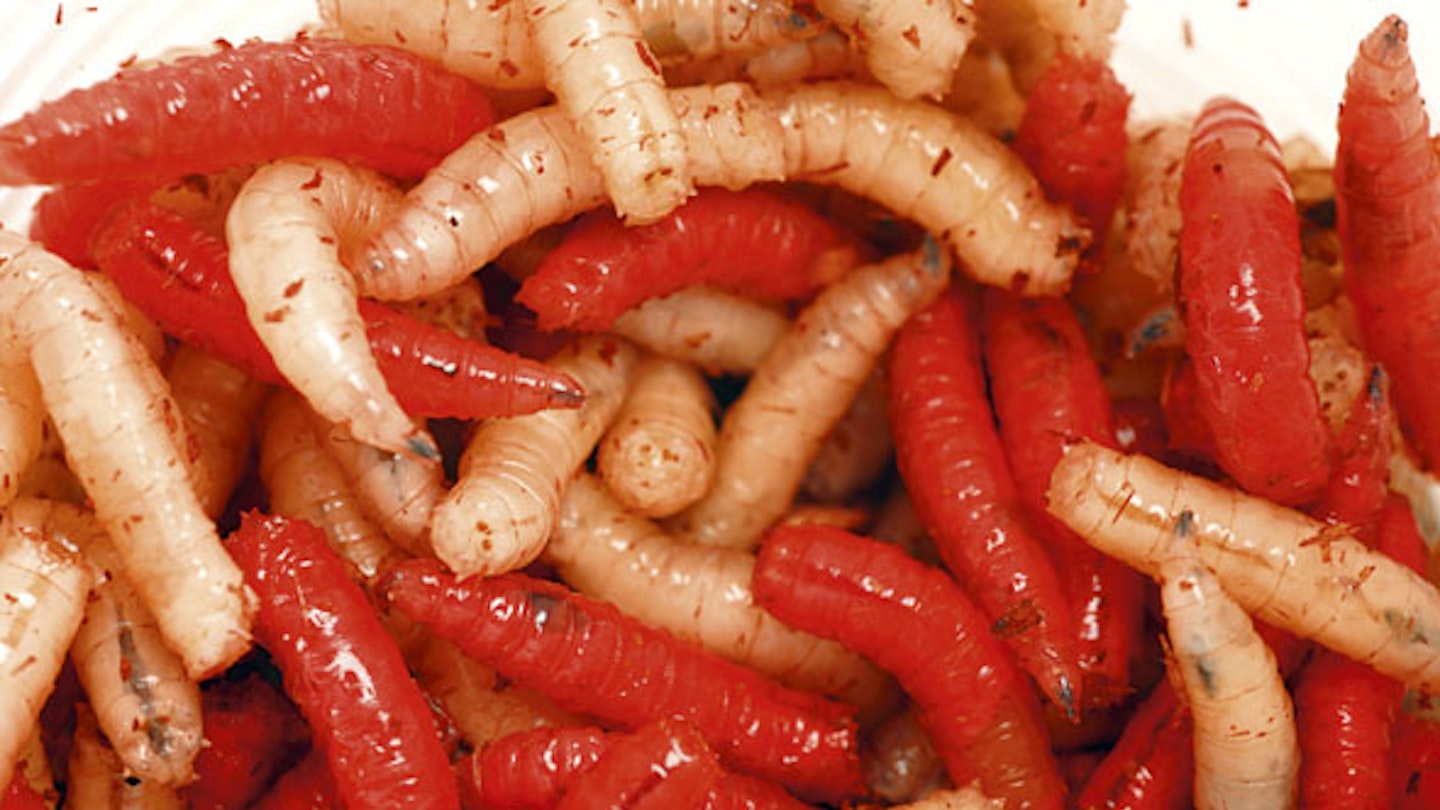Talk about fishing with a non-angler and they will immediately think maggots. They are synonymous with fishing and fish bait, and have been for many many years.
These small, wriggling little creatures are ideal for use as bait because they are cheap, in plentiful supply, they are easy to hook and the fish absolutely love them. Why? Because they are packed to the brim with protein.
They are suitable for year round use and suitable for all venues, from the most powerful rivers through to the most idyllic farm ponds.
What is a maggot?
Basically maggots are the larval stage of a fly – that stage between the egg and the chrysalis – also known as a caster.
There are three types of maggot that we, as anglers, are the most interested in. These three maggots are differently sized and are as follows:- squatt, pinkie and maggot.
Squatts are the larvae of the small House Fly, pinkies are the larvae of the Greenfly, and maggots are the larval stage of the European Bluebottle fly.



Maggots
Squatts
Pinkies
They don’t survive as maggots for very long. Once the egg hatches the maggot emerges and searches for food. That’s why flies try to lay their eggs upon decaying matter as their baby maggots will be surrounded by a plentiful supply of food right at their feet, if they had any feet.
They will gorge themselves upon the meat until they have stored enough fat and food reserves within their body to see them through the next stage – the chrysalis, or caster stage. If you buy really fresh maggots you can actually see the food reserve within its body – that’s the dark spot that seems to move back and forth inside its body as they wriggle.
When the maggot has finished feeding it will either drop off or wriggle away from the food supply and bury itself in any nook or cranny it can find so it can safely begin the metamorphosis into a chrysalis, or caster.
Maggot farming
Maggot farmers take good use of the principle above to produce gallons upon gallons of fresh maggots every day.
They have sealed, warm rooms full of flies and hanging meat that happily carry on breeding and laying their eggs as they would in the wild. The eggs hatch upon the flesh, the maggots feed for a short while and eventually drop off to be collected by the maggot farmer to be sold to the likes of you and me.
Coloured maggots
The usual colour of a maggot is a creamy white, but you can buy bronze, red, green, fluoro pink and even blue maggots nowadays.
To achieve this colouration the maggots are fed upon meat that has been dyed a certain colour. Whatever colour the meat has been dyed, that’s the colour that the maggot will become. Simple really!
What fish like maggots?
The answer to this is basically anything that swims! From tiny little minnows to record-breaking carp – they will all feast upon maggots at some point in their lives.
The only British coarse fish that aren’t really commonly associated with the maggot are pike and zander – they prefer to eat other fish, or our perfectly presented deadbaits or livebaits.
Buying maggots
Maggots are sold by the pint in most tackle shops. You can by half-pints if you so wish. Prices vary across the country, but the average for a pint of normal maggots will be around the £2.75 mark.
It’s far from ideal just turning up at a tackle shop and expecting to take a pint of maggots home – you need something to carry them in so they don’t spill all over your car, the road or in your pocket. The perfect item is a bait box. These have lids that are sealed tight enough to keep the baits where they ought to be, but the lids do have holes to allow a constant stream of fresh air reaching the maggots to not only keep them alive, but to help disperse any condensation. Bait boxes are available in different sizes and it’s always best to only half-fill a bait box to prevent the maggots from sweating as they wriggle amongst each other.
Always ask for a little maize dust or sawdust to be added to the maggots. This helps to keep the baits clean and also helps to absorb any moisture from the baits.
Storing maggots
The perfect place to keep maggots is in a fridge. Here they will remain happy for up to a fortnight (if you have bought them fresh). The cold slows their metabolism down enough to prevent them from changing into casters. Always keep the lid on though, to prevent any damp maggots from escaping inside the fridge.
The next best thing, if you cannot store your maggots in a fridge, is to keep them in a cold and dark place. A garage floor is perfect, or even float the bait box in a bucket of cold water – again remembering to keep the lid on.
Looking after your maggots
If you are keeping the maggots for a while between sessions it’s best to riddle them once a day to remove any dead maggots (also known as skins) and any maggots that have turned to casters.
Find a clean and dry tray, pour your maggots onto the riddle and allow them to wriggle through of their own accord. All the debris and dead baits will be left on the riddle – just feed those to your garden birds – they love ‘em!
